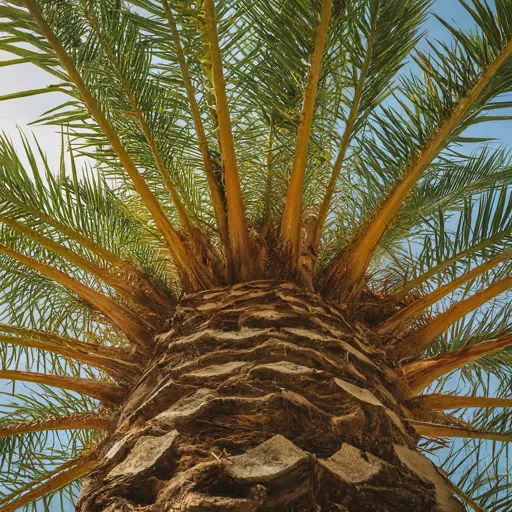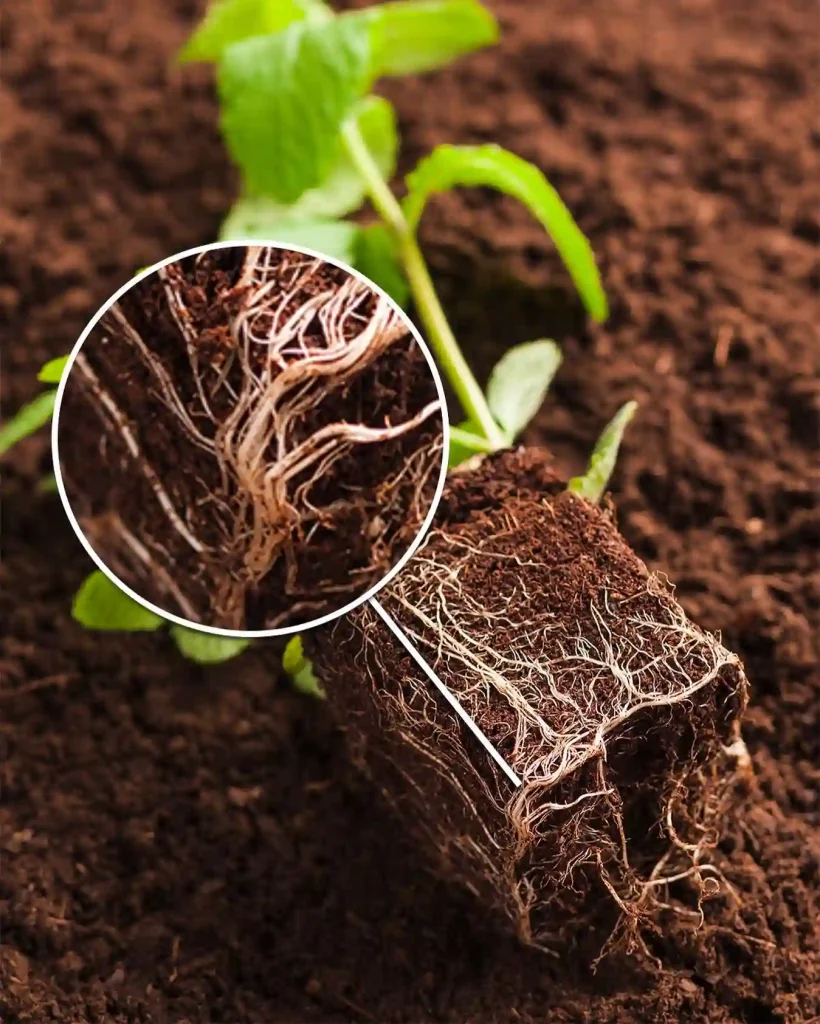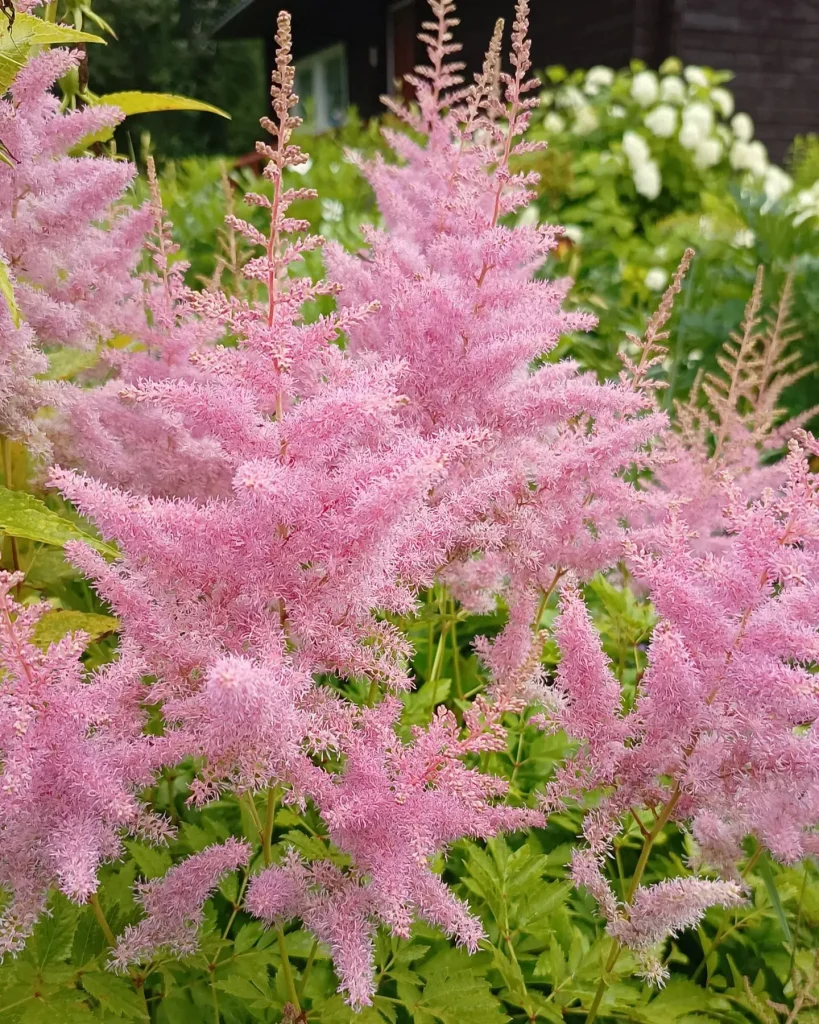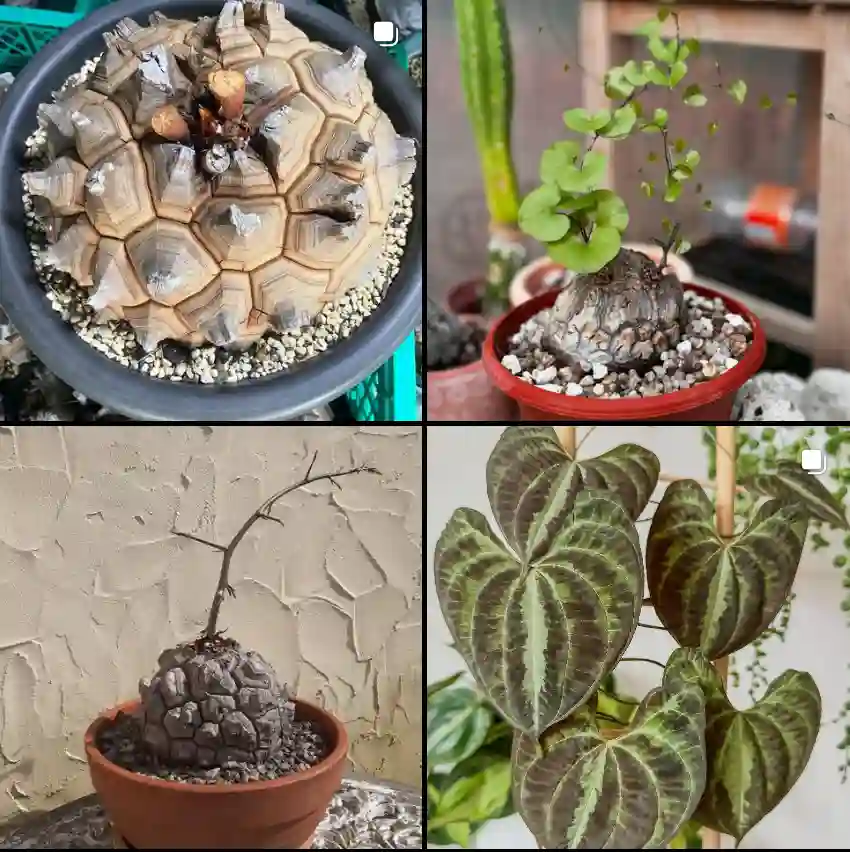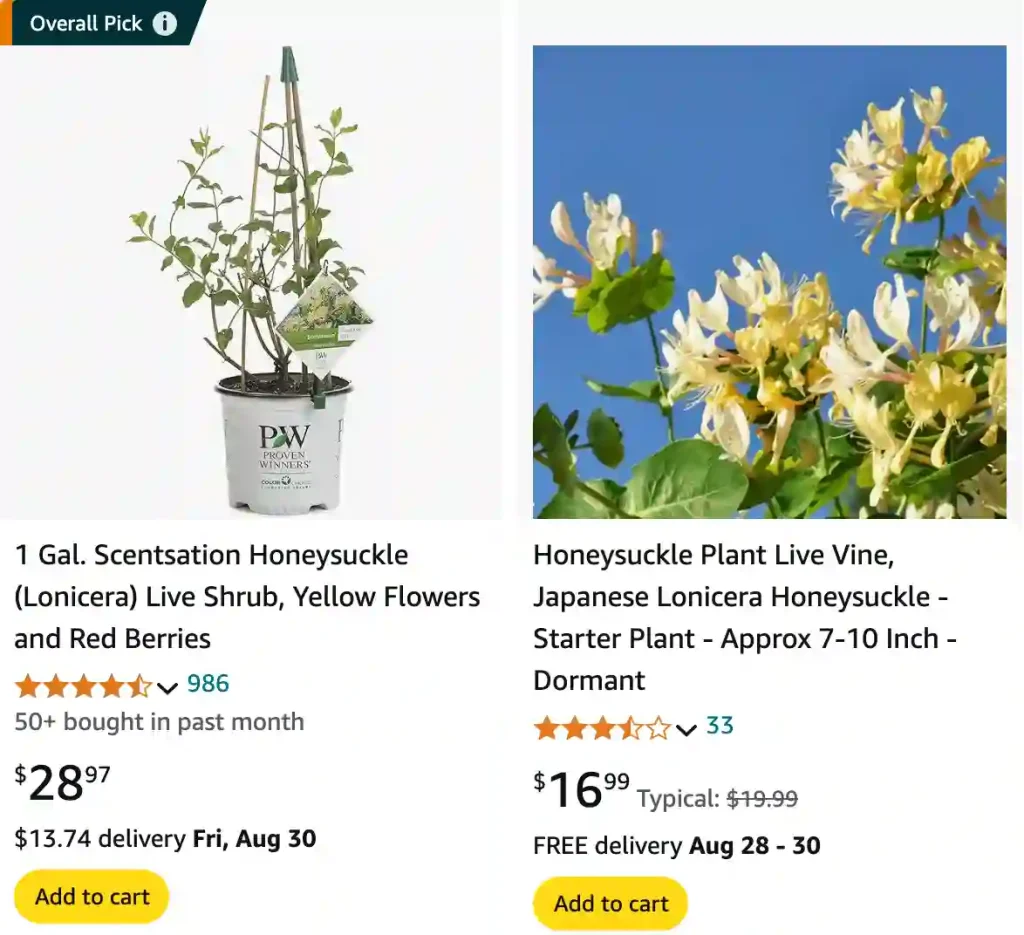
FAQs About Japanese Honeysuckle
When it comes to garden favorites, Japanese Honeysuckle is often on the list due to its charming appearance and fragrant flowers. But, like many plants, it has its own set of questions and concerns. As someone who has dealt with Japanese Honeysuckle, I’ve gathered some frequently asked questions and my insights on this plant.
162 Species in Genus Lonicera
What is Lonicera Japonica?
Lonicera Japonica, commonly known as Japanese Honeysuckle, is a vigorous and versatile evergreen vine native to East Asia. This plant is recognized for its aromatic, tubular flowers that transition from white to yellow, and its ability to cover trellises, fences, and arbors with dense, lush foliage. Often used in gardens for its fast growth and beautiful blooms, Lonicera Japonica has earned its place in many landscaping designs.
What is Lonicera Japonica Used For?
Lonicera Japonica is valued not just for its ornamental appeal but also for its various uses. The fragrant flowers are often used in making herbal teas and traditional medicine due to their reputed cooling and anti-inflammatory properties. The vine’s dense growth habit makes it an excellent choice for privacy screens and ground cover. Additionally, it’s used in erosion control because its extensive root system helps stabilize soil.
Does Lonicera Japonica Have a Dry Stigma?
Lonicera Japonica does not have a dry stigma. The stigma of this honeysuckle is typically moist, which is essential for effective pollination. This moisture helps in attracting pollinators like bees, which are crucial for the plant’s reproduction.
Is Japanese Honeysuckle Edible?
Japanese Honeysuckle is known for its sweet-smelling flowers, which might tempt you to taste them. While the flowers are technically edible, they’re not commonly used in cooking or as a food source. I wouldn’t recommend consuming them in large quantities as there’s limited information about their nutritional value and safety for regular consumption.
Is Japanese Honeysuckle Invasive?
Yes, Japanese Honeysuckle (Lonicera Japonica) is considered invasive in many regions. It spreads rapidly and can outcompete native plants, disrupting local ecosystems. I’ve seen it take over gardens and natural areas, smothering other plants and reducing biodiversity. If you’re growing it, be prepared for its vigorous growth and take measures to control it.
How To Get Rid Of Japanese Honeysuckle?
Getting rid of Japanese Honeysuckle can be quite a task. I’ve found that manual removal is often necessary. This involves digging up the plant, including its extensive root system. Herbicides can be effective but should be used carefully to avoid damaging other plants. Regular maintenance and monitoring are crucial to prevent regrowth.
Does Lonicera Japonica Need to Be Watered?
Yes, Lonicera Japonica needs regular watering, especially during its establishment phase. While it’s relatively drought-tolerant once established, the plant thrives with consistent moisture. Ensure the soil remains evenly moist but not waterlogged. Overwatering can lead to root rot, so proper drainage is essential.
How to Grow Lonicera Japonica?
Growing Lonicera Japonica is straightforward, making it a favorite among gardeners. Here’s how to get started:
- Choose the Right Location: Lonicera Japonica prefers full sun to partial shade. It can adapt to various soil types but thrives in well-drained, loamy soil.
- Planting: Space the plants about 3 to 6 feet apart, depending on the desired coverage. Dig a hole twice as wide as the root ball and mix in compost to enrich the soil.
- Watering: Water the plant thoroughly after planting and keep the soil consistently moist. Once established, reduce watering frequency.
- Fertilizing: Feed the plant with a balanced fertilizer in early spring to promote vigorous growth and abundant blooms.
- Support: Provide a trellis, arbor, or fence for the vine to climb. Lonicera Japonica is a twining vine and will require support to reach its full potential.
How to Care for Lonicera Japonica?
Caring for Lonicera Japonica involves regular maintenance to keep the plant healthy and attractive:
- Pruning: Prune the plant annually to control its size and encourage new growth. Remove any dead or diseased branches to improve air circulation and reduce the risk of pests and diseases.
- Pest and Disease Control: Monitor for common pests like aphids and spider mites. Treat any infestations promptly with appropriate insecticides or natural remedies.
- Mulching: Apply a layer of mulch around the base to retain soil moisture and suppress weeds.
When Does Lonicera Japonica Flower?
Lonicera Japonica typically blooms from late spring to early summer. The flowers start as creamy white and gradually turn yellow as they mature. The blooming period can vary slightly depending on the local climate and growing conditions.
When to Prune Lonicera Japonica?
Prune Lonicera Japonica in late winter or early spring before new growth begins. This timing ensures that you remove any dead or damaged wood and shape the plant for optimal growth. Regular pruning also helps manage the plant’s spread and maintain its appearance.
How To Propagate Japanese Honeysuckle?
Propagating Japanese Honeysuckle is fairly straightforward. You can start new plants from cuttings taken in late summer or early fall. Dip the cut ends in rooting hormone, plant them in a well-draining soil mix, and keep them moist until they establish roots. It’s a reliable method if you’re looking to expand your collection.
Is Japanese Honeysuckle Poisonous?
Japanese Honeysuckle is not generally considered poisonous to humans. However, consuming large quantities might cause digestive upset. It’s always wise to exercise caution and keep the plant away from children and pets who might accidentally ingest parts of it.
Is Japanese Honeysuckle Poisonous To Dogs?
Japanese Honeysuckle is not known to be highly toxic to dogs, but ingestion could lead to mild gastrointestinal issues such as vomiting or diarrhea. If you suspect your dog has eaten some, it’s best to consult a veterinarian to ensure there are no adverse effects.
Do Deer Eat Japanese Honeysuckle?
In my experience, deer tend to avoid Japanese Honeysuckle. Its strong scent and taste are usually off-putting to them. However, deer behavior can vary, and in times of scarcity, they might nibble on it. If deer are a problem in your area, it’s good to have a variety of plants and deterrents to protect your garden.
Does Japanese Honeysuckle Smell?
Yes, Japanese Honeysuckle has a very pleasant, sweet fragrance. The scent is one of its most attractive features, especially in the evening when it’s more intense. This aromatic quality makes it a popular choice for adding a touch of fragrance to gardens and trellises.
How Does Japanese Honeysuckle Affect The Environment?
Japanese Honeysuckle can have significant environmental impacts. Its aggressive growth can choke out native plants, reduce biodiversity, and alter habitats. I’ve seen areas where it has completely taken over, creating dense thickets that are hard to manage. Its spread can be detrimental to local ecosystems.
How To Control Japanese Honeysuckle?
Controlling Japanese Honeysuckle involves a combination of physical removal and vigilance. Regularly cutting it back and removing any new shoots can help manage its spread. It’s also beneficial to keep an eye on areas where it’s growing to address any new growth promptly.
Japanese Honeysuckle Vs. American Honeysuckle
Japanese Honeysuckle (Lonicera japonica) and American Honeysuckle (Lonicera sempervirens) differ in several ways. Japanese Honeysuckle is a vigorous, evergreen vine, while American Honeysuckle is a more restrained, deciduous shrub. The American variety tends to be less invasive and is often preferred for its native status and ability to attract hummingbirds.
Japanese Honeysuckle Vs. Trumpet Honeysuckle
When comparing Japanese Honeysuckle to Trumpet Honeysuckle (Lonicera sempervirens), there are some notable differences. Trumpet Honeysuckle is renowned for its tubular, red or orange flowers that attract hummingbirds, while Japanese Honeysuckle has a more delicate, white or yellow bloom. Trumpet Honeysuckle is also less invasive and better suited for gardens where you want to avoid aggressive spread.
What To Plant With Japanese Honeysuckle?
If you decide to plant Japanese Honeysuckle, consider companion plants that can complement its growth. Plants like clematis or climbing roses can work well alongside it, providing a variety of colors and textures. Just keep in mind that Japanese Honeysuckle can be quite dominant, so choose plants that can tolerate or coexist with its vigorous growth.
Benefits of Japanese Honeysuckle
Despite its invasive nature, Japanese Honeysuckle does have some benefits. It provides year-round greenery, lovely fragrant blooms, and can quickly cover unsightly structures. If managed properly, it can be a beautiful addition to your garden, especially in areas where its rapid growth can be kept in check.
Common Problems with Japanese Honeysuckle
One of the most common problems with Japanese Honeysuckle is its tendency to become invasive. It can quickly spread beyond intended areas and overwhelm other plants. Regular maintenance and management are crucial to keeping it under control and preventing it from becoming a nuisance in your garden.
In conclusion, Japanese Honeysuckle is a plant with both advantages and challenges. By understanding its characteristics and taking proactive steps, you can enjoy its beauty while managing its more problematic aspects.
If i die, water my plants!
